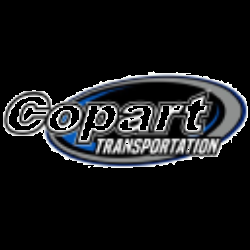Overall, Copart Incorporated demonstrates strong business quality with solid growth metrics, technological advancements, and a diverse seller base. However, it must navigate macroeconomic uncertainties as it pursues future growth opportunities, particularly through its Title Express platform and consignment model transitions.
Analysis Date: February 20, 2025
Last Updated: March 11, 2025
Trailing Twelve Months (TTM) values provide a view of the company's performance over the last year.
Graham Value Metrics
Benjamin Graham's value investing approach focuses on finding stocks with a significant margin of safety between their intrinsic value and market price.
Intrinsic Value
Estimated fair value based on Graham's formula
$58.04
Current Market Price: $54.59
IV/P Ratio: 1.06x (>1.0 indicates undervalued)
Margin of Safety
Gap between intrinsic value and market price
6.0%
Graham recommended a minimum of 20-30% margin of safety
Higher values indicate a greater potential discount to fair value
ROE: 18.830827201895016
ROA: 4.216668859900469
Gross Profit Margin: 58.66110953680796
Net Profit Margin: 32.27283489736715
Trailing Twelve Months (TTM) values provide a view of the company's performance over the last year.
Strong Net Profit Margin
The net profit margin of 32.27% indicates that CPRT is highly efficient in converting revenue into actual profit, reflecting strong operational performance.
High Return on Equity
With a return on equity of 18.83%, CPRT demonstrates effective use of shareholder equity to generate profits.
High Price to Free Cash Flow Ratio
51.49
Price to Free Cash Flow Ratio
The P/FCF ratio of 51.49 suggests that the market is valuing the company's free cash flow quite aggressively, which could indicate potential overvaluation.
About Profitability Metrics
Profitability metrics measure a company's ability to generate earnings relative to its revenue, operating costs, and other relevant metrics. Higher values generally indicate better performance.
Return on Equity (ROE)
Measures how efficiently a company uses its equity to generate profits
18.83%
10%
15%
Higher values indicate better returns for shareholders
TTM (as of 2025-04-16)
Return on Assets (ROA)
Measures how efficiently a company uses its assets to generate profits
4.22%
3%
7%
Higher values indicate better asset utilization
TTM (as of 2025-04-16)
Gross Profit Margin
Percentage of revenue retained after accounting for cost of goods sold
58.66%
20%
40%
Higher values indicate better efficiency in production
TTM (as of 2025-04-16)
Net Profit Margin
Percentage of revenue retained after accounting for all expenses
32.27%
8%
15%
Higher values indicate better overall profitability
TTM (as of 2025-04-16)
Low Debt Levels
0.014
Debt to Equity Ratio
0.013
Debt to Assets Ratio
With a debt to equity ratio of 0.014 and debt to assets ratio of 0.013, CPRT demonstrates a very low level of debt, indicating strong financial stability.
High Liquidity Ratios
The current ratio of 7.89 and quick ratio of 7.79 indicate excellent liquidity, meaning CPRT has more than enough short-term assets to cover its liabilities.
No Interest Coverage
0.0
Interest Coverage Ratio
An interest coverage ratio of 0.0 indicates that the company does not have any interest expenses, which may be misleading and could raise concerns about future financing needs.
About Financial Health Metrics
Financial health metrics assess a company's ability to meet its financial obligations and its overall financial stability.
Debt to Equity Ratio
Total debt divided by total equity
0.01x
1.0x
2.0x
Lower values indicate less financial leverage and risk
Less than 1.0 is conservative, 1.0-2.0 is moderate, >2.0 indicates high risk
Q2 2025
Current Ratio
Current assets divided by current liabilities
7.89x
1.0x
2.0x
Higher values indicate better short-term liquidity
Less than 1.0 is concerning, 1.0-2.0 is adequate, greater than 2.0 is good
Q2 2025


